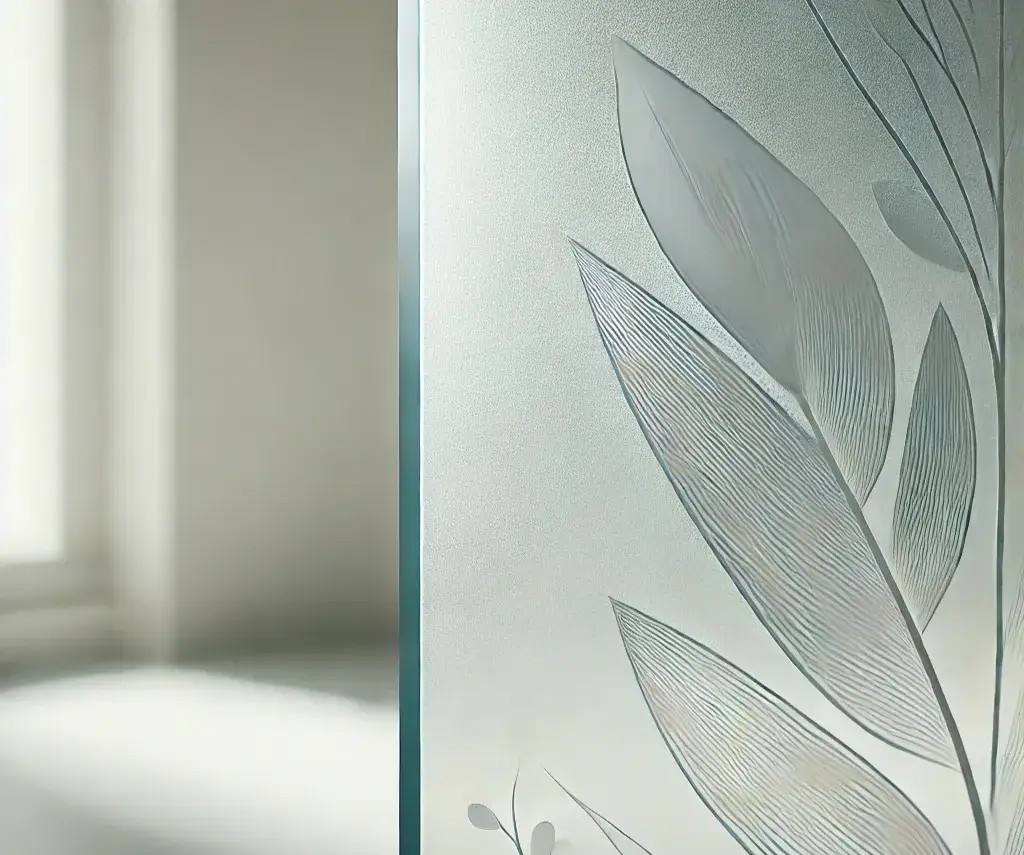When it comes to enhancing your home or office with sophistication and functionality, acid etched glass stands out as a timeless choice. This guide dives into everything you need to know about etched glass for windows and doors—from its artistic appeal to practical benefits—and answers your top questions.

What is Etched Glass?
Etched glass is a decorative glass treatment where designs, patterns, or textures are permanently engraved onto the surface. The most common method, acid etching, involves applying a corrosive acid (like hydrofluoric acid) to dissolve the glass surface, creating a frosted, matte, or intricate design. Unlike temporary films, acid-etched glass offers a permanent, scratch-resistant finish.
Key Features:
- Privacy: Blurs visibility while allowing natural light.
- Customization: Patterns range from subtle textures to detailed artwork.
- Durability: Resists wear, fading, and peeling.
Acid Etched Glass vs. Frosted Glass: What’s the Difference?
While both frosted and acid-etched glass provide privacy, they differ in creation and aesthetics:
| Feature | Acid Etched Glass | Frosted Glass |
|---|---|---|
| Production | Chemically etched with acid | Sandblasted or coated with film |
| Texture | Smooth, matte finish | Slightly grainy surface |
| Durability | Permanent; withstands cleaning | Film can peel; blasting wears off |
| Customization | Intricate patterns possible | Limited to simpler designs |
Best For:
-
Acid Etched: High-traffic areas (entry doors, shower enclosures).
-
Frosted: Temporary or budget-friendly solutions (rental spaces).
Applications of Acid-Etched Patterned Glass
From residential to commercial spaces, etched patterned glass elevates design while serving practical purposes:
1. Front Doors: Add elegance with floral or geometric designs.
2. Bathroom Windows: Ensure privacy without sacrificing light.
3. Office Partitions: Combine professionalism with artistic flair.
4. Cabinet Inserts: Upgrade kitchens with subtle textures.
Pro Tip: Pair glass window etching with energy-efficient glazing for style and insulation.
How is Acid Etched Glass Made?
The acid to etch glass process involves:
1. Design Transfer: A resist stencil is applied to the glass.
2. Acid Application: Hydrofluoric acid dissolves exposed areas.
3. Neutralization: Acid is washed off, revealing the etched pattern.
Safety Note: Professional etchers use controlled environments to handle acids safely.
Benefits of Acid-Etched Glass
- Light Diffusion: Softens harsh sunlight while brightening rooms.
- Low Maintenance: Easy to clean with standard glass cleaners.
- UV Resistance: Protects interiors from sun damage.
- Timeless Appeal: Complements modern and traditional decor.
FAQs About Etched Glass
Is acid etched glass the same as frosted glass?
No—acid etched glass is chemically treated for a permanent finish, while frosted glass is often sandblasted or coated with a removable film.
Can acid-etched glass be used for exterior doors?
Yes! It’s durable and weather-resistant, ideal for entryways.
Is etching with acid safe for tempered glass?
No—tempered glass cannot be etched post-production. Plan designs before tempering.
Can I etch glass myself?
DIY kits exist but lack precision. For lasting results, trust professionals.
Upgrade Your Space with LEA Glass Repair
At LEA Glass Repair, we specialize in custom acid-etched glass solutions for Toronto homes and businesses. Whether you’re crafting a statement entry door or a discreet bathroom window, our experts blend artistry with technical skill for flawless results.
Why Choose Us?
-
Custom Designs: From subtle textures to bold patterns.
-
Quality Materials: Durable, eco-friendly glass options.
-
Professional Installation: seamless and secure.
📞 Schedule Your Free Assessment Today!
👉 Call Now: (437) 826-5967
📧 Email: info@learepair.ca
💻 Schedule Online: Book Your Free Consultation
Transform your windows and doors into works of art—where beauty meets function. 🎨✨
